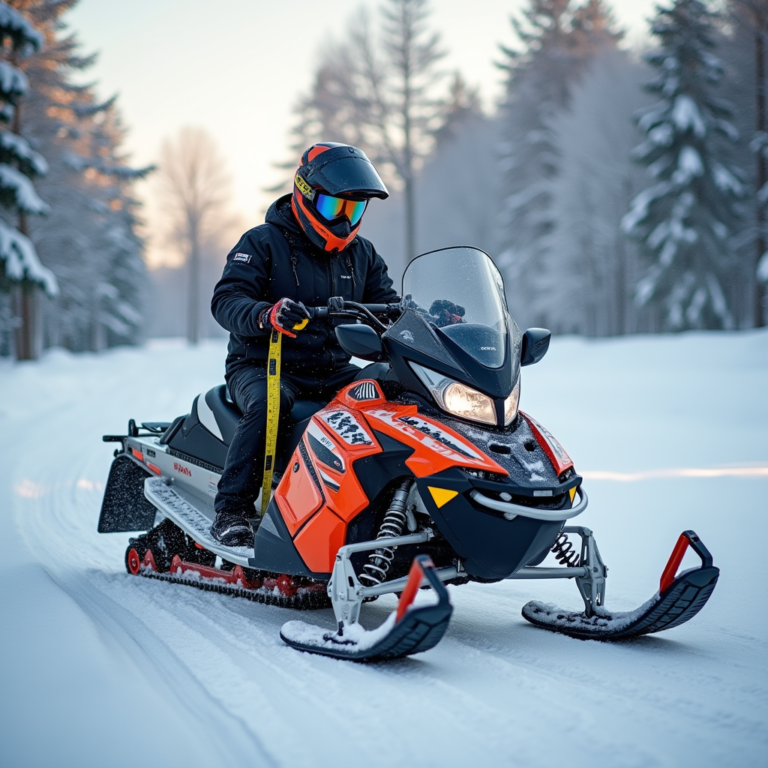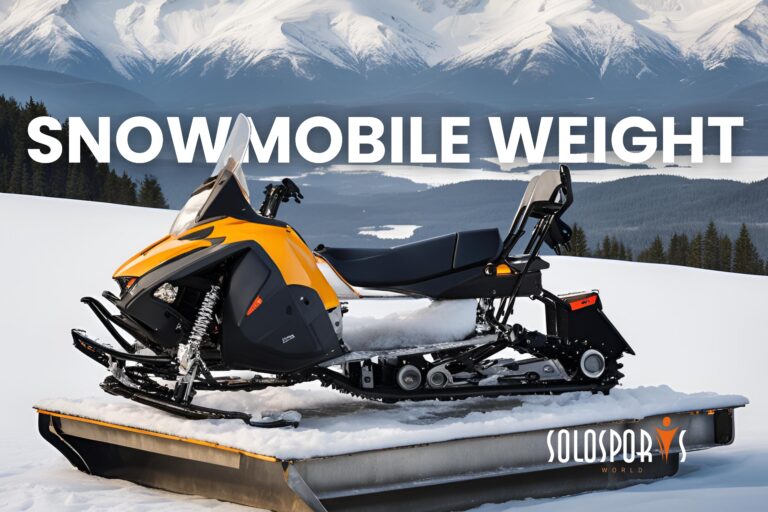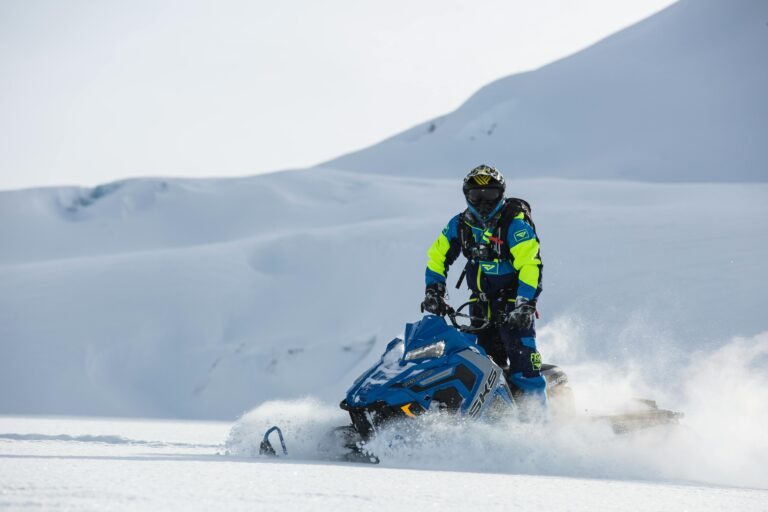Storing your snowmobile outside might seem like no big deal, but doing it right takes some thought. You want to keep it safe from weather, rust, and—let’s be honest—thieves. With the right prep, your sled will stay in great shape and be ready to hit the trails the next winter. Here’s what I’ve learned about outdoor storage and how you can protect your ride.
In general, storing a snowmobile outside requires careful preparation to protect it from weather damage and theft. Essential practices include thorough cleaning, properly covering and securing the vehicle, and applying rust protective measures. Make sure to consider the geographical conditions during storage.
Let’s break down what that means in real life. Think of your snowmobile as a guest spending the offseason outdoors: you want to give it shelter, protection, and visits to make sure it’s not suffering.
How to Prepare Your Snowmobile for Outdoor Storage?
Preparing your snowmobile for outdoor storage involves several essential steps: start by cleaning thoroughly to remove any dirt, ice, or debris. Next, check and adjust fluid levels, changing oil if necessary. Finally, inspect for any mechanical issues and address them to ensure a smooth ride next season.
Don’t skip the prep work—it can save you a lot of headaches next season. Here’s a simple routine:
- Wash Off Grime: Dirt and salt can eat away metal if left too long. Give your ride a good wash, dry it thoroughly, and don’t rush this step. Trust me, a clean snowmobile is the best insurance against rust.
- Check Fluid Levels: Fresh oil and coolant keep your engine happy when it’s resting. Think of this like changing the oil in your car before a long stretch of inactivity—your snowmobile will thank you.
- Inspect Key Components: Loose wires, leaks, or worn belts won’t fix themselves. Catching these issues before storage means no nasty surprises when you’re ready to ride again.
What Should You Look for in a Snowmobile Cover?
When choosing a snowmobile cover for outdoor storage, focus on waterproofing and breathability to prevent moisture buildup. Materials such as heavy-duty vinyl and tear-resistant polyester are ideal, while ventilation features further enhance protection against harsh conditions.
The cover you choose is your snowmobile’s first line of defense.
- Waterproofing keeps rain and melting snow from turning your sled into a rusty mess.
- Breathability stops moisture from getting trapped underneath, which causes corrosion—kind of like letting your snowmobile get some fresh air.
- Durability matters; a tough fabric like heavy-duty vinyl can handle wind or storms without tearing.
- Size Fit is key. A cover that’s too loose flaps in the wind and wears out faster, so pick one that hugs your sled snugly.
How Long Can You Leave Your Snowmobile Outside?
The duration a snowmobile can safely remain outside varies based on climate conditions. Generally, it’s not advisable to leave your sled outside for more than a few weeks in harsh weather. For short-term outdoor storage, keep it secure and covered, but consider bringing it indoors for long-term use when necessary.
If you live where winters are brutal, keeping your snowmobile outside for too long will cause problems. Here’s a quick breakdown:
- Winter: 2-4 weeks max with a solid cover and regular checks. Anything longer risks rust and mechanical failures.
- Summer: Ideally, bring it indoors or at least keep it in a shaded spot away from sun damage.
- Always be ready to adapt if heavy rain or storms are forecasted. You can’t just hope your sled will survive a flood.
What Rust Prevention Techniques Should You Use?
To prevent rust while storing a snowmobile outside, use rust inhibitors and quality sheeting over exposed metal parts. Regular maintenance checks should ensure that protective measures remain effective, adapting techniques based on local weather conditions.
Rust can sneak up on you if you’re not careful. Here’s how to keep it at bay:
- Rust Inhibitors: Spray everything metal with a good rust-preventive product. Think of it as sunscreen but for your metal parts.
- Cover Exposed Areas: Some spots are more vulnerable—cover these with extra sheeting or tarps.
- Maintenance Checks: Every few weeks, take a peek underneath and touch up any spots that look vulnerable.
How to Properly Secure Your Snowmobile from Theft?
Best security measures against theft include using heavy-duty locks and chains, selecting a safe storage location, and utilizing community resources to monitor local theft activities. Always secure the snowmobile properly when left outdoors.
Snowmobiles aren’t cheap, and no one wants to come back to find theirs gone.
- Locks and Chains: Use strong, weatherproof locks to anchor it. Thieves hate a good lock.
- Location Matters: If possible, stash it somewhere visible. Thieves prefer easy, hidden targets.
- Community Programs: Join local groups or watch programs to stay in the know about suspicious activity.
What are Common Mistakes While Storing a Snowmobile Outside?
Common mistakes made by snowmobile owners include inadequate cleaning and maintenance, neglecting to use an appropriate cover, and failing to secure their snowmobiles properly. Avoid these pitfalls to ensure a safe and functional machine.
Avoid these traps that can cost you big:
- Skipping cleaning: Leaving dirt or snow on your sled is like inviting rust to set up camp.
- Using the wrong cover: A cheap, ill-fitting cover isn’t protection—it’s a trap for moisture and debris.
- Not locking up: Don’t make it easy for thieves. Even if it’s just short-term storage, lock your sled down.
What are the Best Outdoor Storage Options for Snowmobiles?
Outdoor storage solutions include tarps, sheds, and dedicated outdoor storage units, each with unique advantages. Tarps provide less protection, while sheds or specialized units offer robust coverage against both weather and theft.
Here’s how the options stack up:
| Storage Option | Advantages | Disadvantages |
|---|---|---|
| Tarps | Lightweight, inexpensive, and easy to store. | Less durable and protection against water leaks. |
| Sheds | Offers solid protection against elements, customizable for multiple snowmobiles. | Can be expensive and requires space. |
| Outdoor Storage Units | Professional security, monitored facilities, and climate-controlled spaces. | Continuous costs for rental; accessibility may vary. |
How to Winterize Your Snowmobile Before Storing?
Winterization involves a series of steps: Drain any fluids appropriately, add fuel stabilizers to prevent deterioration, and remove the battery. These measures enhance long-term performance and overall preservation.
Winterizing isn’t just a buzzword—it really helps your snowmobile survive downtime. Try this:
- Fluid Draining: Get rid of old fuel and oil so you don’t have sticky residues gumming up your engine.
- Add Stabilizers: Fuel stabilizers extend the life of the gas and prevent clogs.
- Battery Removal: Bring the battery inside and keep it charged. Trust me, batteries hate the cold and neglect.
If you want a visual guide, check out this video on How to Properly Store Your Snowmobile Outside.
FAQs
How do I prepare my snowmobile for summer storage?
Preparing your snowmobile for summer storage includes cleaning it thoroughly, changing the oil, and removing the battery. It’s also vital to use fuel stabilizers to prevent deterioration and store it in a cool, dry place away from sunlight. Ensure to cover it to protect it from dust and pests.
Can I leave my snowmobile outside in the winter?
Leaving your snowmobile outside in winter is possible, but it’s crucial to protect it properly. Use a waterproof cover and secure it from theft. Prolonged exposure to harsh winter conditions without prepping can lead to rust and mechanical issues, so regular check-ups are advisable.
What is the best way to cover my snowmobile outside?
The best way to cover a snowmobile outside is by using a waterproof and breathable tarp or a specific snowmobile cover designed for outdoor use. Ensure that the cover fits snugly to prevent wind from lifting it, while also allowing for ventilation to avoid moisture buildup beneath.
How can I prevent rust on my snowmobile during outdoor storage?
To prevent rust during outdoor storage, thoroughly clean the snowmobile, apply a rust inhibitor, and cover it with a breathable tarp. Regularly check and maintain fluid levels, and ensure that metal parts are protected from moisture. Proper ventilation under the cover is also essential.
Taking good care of your snowmobile outside isn’t rocket science—but it requires attention. Follow these tips, and your sled will stay happy and healthy for many winters to come. For more tips, the National Snowmobile Association and EPA have great info. And if you want to deepen your knowledge, explore more snowmobiling articles on our site, like this one or this guide.
Remember, a little care now means more fun on the trails later!
Here are some helpful videos too:
Want to sharpen your safety game? Watch this:







